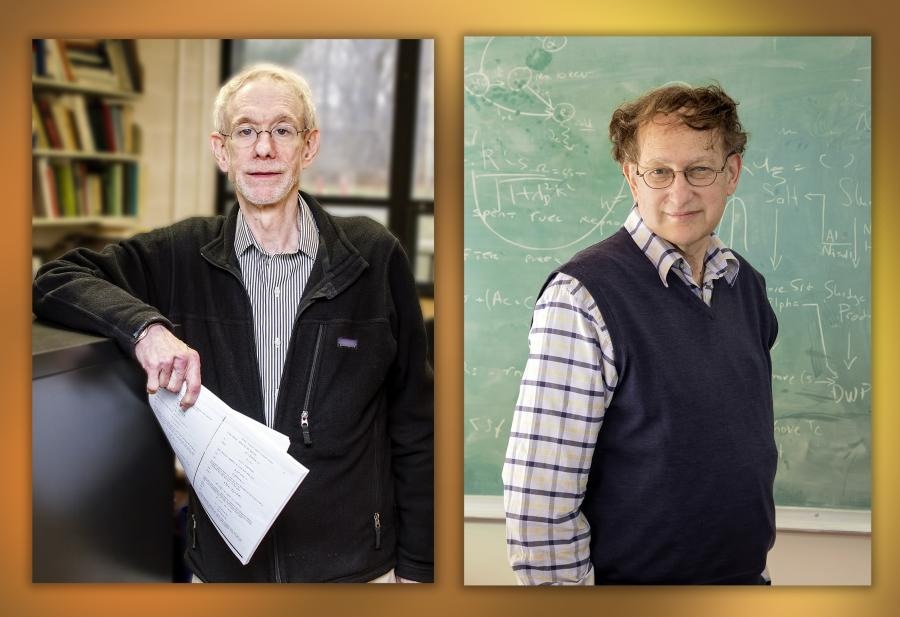Jan 9 2019
Researchers who focus on recreating on Earth the fusion reaction powering the sun and stars must maintain the superhot plasma free from disruptions.
 Physicists Allan Reiman, left, and Nat Fisch. (Image credit: Elle Starkman)
Physicists Allan Reiman, left, and Nat Fisch. (Image credit: Elle Starkman)
Currently, scientists from the U.S. Department of Energy’s (DOE) Princeton Plasma Physics Laboratory (PPPL) have come up with a process for controlling the disruptions that are considered to be the most dangerous.
Recreation of fusion, whereby boundless energy is released by fusing atomic nuclei in the state of matter called plasma, could generate clean and nearly limitless power for producing electricity for industries and cities everywhere. Hence, the capture and control of fusion energy is an important scientific and engineering challenge for scientists across the world.
Creating magnetic islands
The PPPL discovery has been described in Physical Review Letters and focuses on the purported tearing modes—instabilities in the plasma that form magnetic islands, bubble-like structures that form in the plasma and are an important source of plasma disruptions. These islands can grow and initiate disruptive events that stop fusion reactions and damage doughnut-shaped facilities known as “tokamaks” in which the reactions are carried out.
In the 1980s, scientists discovered that tearing modes could be stabilized and the risk of disruptions could be reduced by using radio-frequency (RF) waves to drive current in the plasma. However, they did not notice that small changes (i.e. perturbations) in the plasma temperature could enhance the stabilization process, as soon as an important threshold in power is exceeded. The physical mechanism identified by PPPL operated in this way:
- The temperature perturbations have an impact on the strength of the current drive and the amount of RF power stored in the islands
- The perturbations and their effect on the power deposition feedback against each other in a complex, or nonlinear, way
- The efficiency of the stabilization process is improved when the feedback joins with the current drive’s sensitivity to temperature perturbations
- Moreover, it is less likely that the improved stabilization will be affected by misaligned current drives that fail to hit the center of the island
The overall effect of this process gives rise to a phenomenon that is technically called as “RF current condensation,” or concentration of RF power within the island that prevents it from growing.
The power deposition is greatly increased. When the power deposition in the island exceeds a threshold level, there is a jump in the temperature that greatly strengthens the stabilizing effect. This allows the stabilization of larger islands than previously thought possible.
Allan Reiman, Study Lead Author, Theoretical Physicist, PPPL.
Beneficial to ITER
This process can be specifically advantageous to ITER, the international tokamak being constructed in France to exhibit the feasibility of fusion power. “There is worry about islands getting large and causing disruptions in ITER,” stated Reiman. “Taken together, these new effects should make it easier to stabilize ITER plasmas.”
Reiman collaborated with Professor Nat Fisch, associate director for academic affairs at PPPL and co-author of the study. In a landmark 1970s paper, Fisch had shown that it is possible to use RF waves to drive currents to restrict tokamak plasmas through a process that is currently known as “RF current drive.”
Fisch pointed out how “it was Reiman’s groundbreaking paper in 1983 that predicted that these RF currents could also stabilize tearing modes. The use of RF current drive for stabilization of tearing modes was perhaps even more crucial to the tokamak program than using these currents to confine the plasma.”
Hence, Reiman’s 1983 paper essentially launched experimental campaigns on tokamaks worldwide to stabilize tearing modes. Significantly, in addition to predicting the stabilization of tearing modes by RF, the 1983 paper also pointed out the importance of the temperature perturbation in magnetic islands.
Allan Reiman, Study Lead Author, Theoretical Physicist, PPPL.
Underappreciated feature
The new study looks at the effect of the temperature perturbations on the islands in a different light. This feature has been underestimated from the time the 1983 paper noted it.
We basically went back 35 years to carry that thought just a bit further by exploring the fascinating physics and larger implications of positive feedback. It turned out that these implications might now be very important to the tokamak program today.
Nat Fisch, Associate Director for Academic Affairs, PPPL.
The theoreticians started their latest study using a simple model and progressed to more complex ones to overcome the important challenges faced. Currently, they aim to paint an elaborate picture with more advanced models. They have also been striving to put forward experimental campaigns that will reveal these new effects. The DOE Office of Science has supported this study.